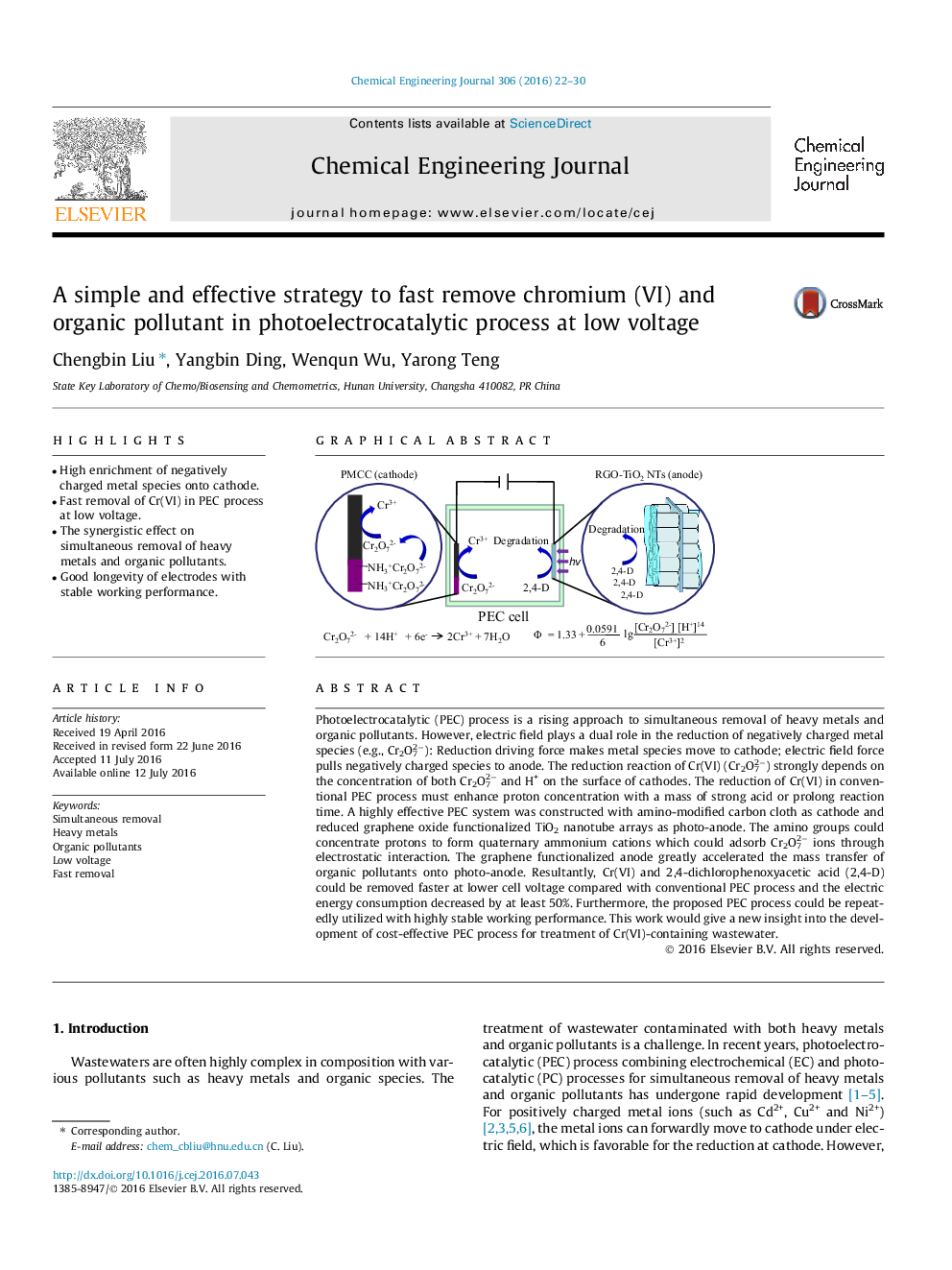| Article ID | Journal | Published Year | Pages | File Type |
|---|---|---|---|---|
| 145236 | Chemical Engineering Journal | 2016 | 9 Pages |
•High enrichment of negatively charged metal species onto cathode.•Fast removal of Cr(VI) in PEC process at low voltage.•The synergistic effect on simultaneous removal of heavy metals and organic pollutants.•Good longevity of electrodes with stable working performance.
Photoelectrocatalytic (PEC) process is a rising approach to simultaneous removal of heavy metals and organic pollutants. However, electric field plays a dual role in the reduction of negatively charged metal species (e.g., Cr2O72−): Reduction driving force makes metal species move to cathode; electric field force pulls negatively charged species to anode. The reduction reaction of Cr(VI) (Cr2O72−) strongly depends on the concentration of both Cr2O72− and H+ on the surface of cathodes. The reduction of Cr(VI) in conventional PEC process must enhance proton concentration with a mass of strong acid or prolong reaction time. A highly effective PEC system was constructed with amino-modified carbon cloth as cathode and reduced graphene oxide functionalized TiO2 nanotube arrays as photo-anode. The amino groups could concentrate protons to form quaternary ammonium cations which could adsorb Cr2O72− ions through electrostatic interaction. The graphene functionalized anode greatly accelerated the mass transfer of organic pollutants onto photo-anode. Resultantly, Cr(VI) and 2,4-dichlorophenoxyacetic acid (2,4-D) could be removed faster at lower cell voltage compared with conventional PEC process and the electric energy consumption decreased by at least 50%. Furthermore, the proposed PEC process could be repeatedly utilized with highly stable working performance. This work would give a new insight into the development of cost-effective PEC process for treatment of Cr(VI)-containing wastewater.
Graphical abstractFigure optionsDownload full-size imageDownload as PowerPoint slide
